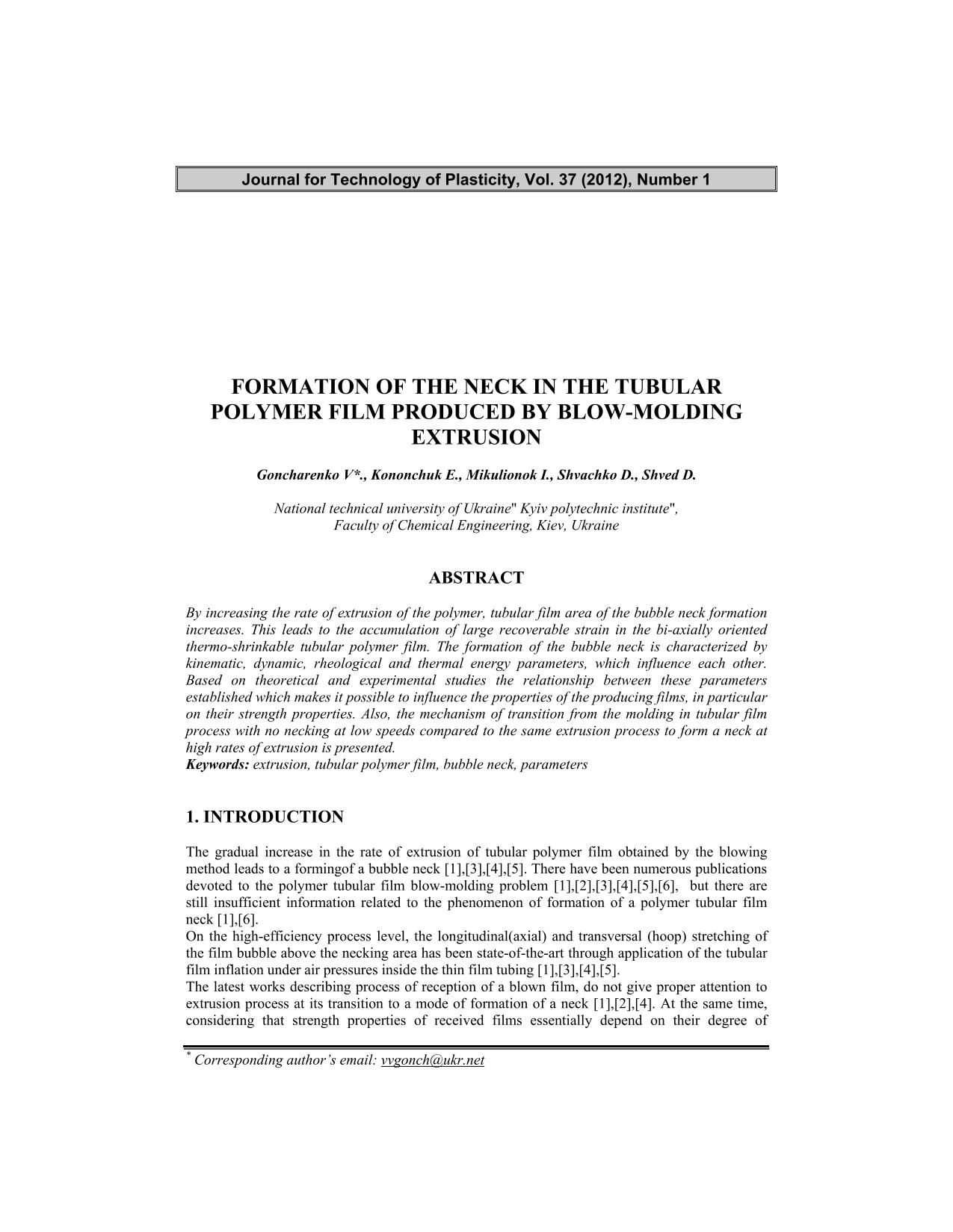Formation of the neck in the tubular polymer film produced by blow-molding extrusion

Published 2012-06-29
abstract views: 13 // Full text article (PDF): 5
Keywords
- extrusion,
- tubular polymer film,
- bubble neck,
- parameters
How to Cite

This work is licensed under a Creative Commons Attribution 4.0 International License.
Abstract
By increasing the rate of extrusion of the polymer, tubular film area of the bubble neck formation increases. This leads to the accumulation of large recoverable strain in the bi-axially oriented thermo-shrinkable tubular polymer film. The formation of the bubble neck is characterized by kinematic, dynamic, rheological and thermal energy parameters, which influence each other. Based on theoretical and experimental studies the relationship between these parameters established which makes it possible to influence the properties of the producing films, in particular on their strength properties. Also, the mechanism of transition from the molding in tubular film process with no necking at low speeds compared to the same extrusion process to form a neck at high rates of extrusion is presented.

